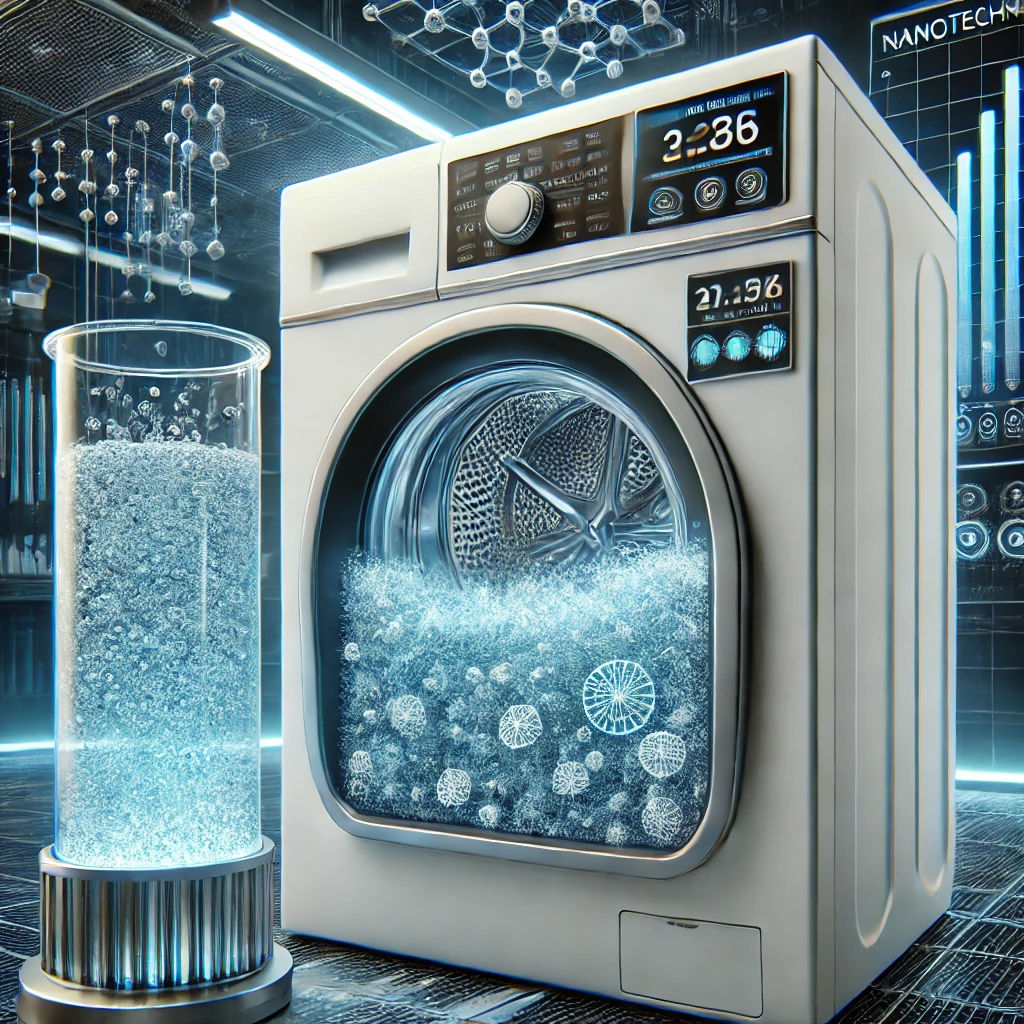Introduction
Microplastic pollution is one of the most pressing environmental challenges of the modern era. These tiny plastic particles, often less than 5mm in size, enter our water bodies through various sources, including industrial waste, plastic degradation, and even washing clothes made from synthetic fibers.
Thanks to PlanetCare, an innovative company utilizing nanotechnology materials, a breakthrough microfibre filter has been developed that can be integrated into washing machines. This filter captures microplastics before they enter wastewater, preventing them from polluting the world’s oceans, rivers, and lakes. The technology works through water microfiltration using electrically charged fibres and membranes, significantly reducing microplastic pollution.
This article explores nanotechnology’s role in environmental protection, the science behind PlanetCare’s filtration system, its impact on reducing microplastic pollution, and the future of nanotechnology materials in sustainability.
Understanding Microplastic Pollution
1. What Are Microplastics?
Microplastics are tiny plastic particles that result from the breakdown of larger plastics or are released directly into the environment through household and industrial activities. They fall into two categories:
- Primary Microplastics: Produced intentionally, such as microbeads in cosmetics and synthetic fabric fibers shed from clothes.
- Secondary Microplastics: Result from the fragmentation of larger plastic items like bottles and bags due to environmental degradation.
2. How Do Microplastics Enter the Environment?
- Laundry Wastewater: Clothes made from polyester, nylon, and acrylic shed millions of fibers per wash.
- Industrial Runoff: Factories release microplastics from plastic production and processing.
- Plastic Decomposition: Over time, discarded plastic breaks down into micro-sized particles.
- Personal Care Products: Some toothpaste and scrubs contain plastic microbeads.
3. The Environmental and Health Impact of Microplastics
- Marine Ecosystem Disruption: Microplastics are ingested by marine life, entering the food chain and causing harm to aquatic species.
- Human Health Risks: Studies suggest that microplastics can enter the human body through water and food, potentially causing toxicity.
- Soil Contamination: Microplastics in wastewater sludge affect agricultural land, impacting soil quality and crop health.
Nanotechnology: A Breakthrough in Microplastic Filtration
1. What is Nanotechnology?
Nanotechnology refers to the manipulation of matter at an atomic and molecular scale (1-100 nanometers) to create materials with unique properties. These materials can have enhanced filtration, durability, and chemical resistance, making them ideal for environmental applications.
2. The Science Behind PlanetCare’s Nanotech Filter
PlanetCare’s microfibre filter integrates nanotechnology-based microfiltration to capture microplastics during washing machine cycles. The technology consists of:
- Electrically Charged Fibers: These fibers attract and trap microplastic particles, preventing them from escaping into wastewater.
- Membrane Filtration System: The multi-layered nanofiber membrane captures 99% of microfibres, ensuring effective filtration.
- Reusable & Replaceable Filter Cartridges: The filters can be cleaned and reused, making them environmentally friendly.
3. How It Works
- Installation: The PlanetCare filter is attached to the washing machine outlet.
- Filtration Process: As water passes through the filter, microfibres and microplastics are trapped by the charged nanofibers.
- Waste Collection: The filtered particles accumulate within the replaceable cartridge, preventing them from entering wastewater.
- Recycling Mechanism: Used cartridges can be sent back to PlanetCare for proper recycling, reducing landfill waste.
Benefits of Nanotech-Based Microplastic Filtration
1. Reduction in Water Pollution
- Prevents billions of microplastics from entering water systems annually.
- Protects marine biodiversity and prevents bioaccumulation of plastics in fish and seafood.
2. Sustainable and Eco-Friendly Solution
- Unlike disposable filters, PlanetCare’s cartridges are recyclable and reusable, reducing waste.
- Helps clothing manufacturers and consumers adopt a more sustainable lifestyle.
3. Improved Water Quality for Human Consumption
- Many microplastics end up in drinking water sources, affecting human health.
- By filtering wastewater, fewer contaminants enter municipal water supplies.
4. Easy Integration with Existing Appliances
- Compatible with standard household and industrial washing machines.
- Simple installation and low maintenance make it accessible for general consumers.
5. Promotes Circular Economy in Textile Waste Management
- Enables fashion brands and textile manufacturers to reduce their environmental footprint.
- Supports initiatives for closed-loop recycling of textiles and plastic waste.
Challenges and Limitations
1. Initial Cost and Consumer Adoption
- While the filters are cost-effective in the long run, initial adoption rates may be slow due to costs.
- Raising awareness about microplastic pollution is essential to encourage consumers to invest in filtration systems.
2. Maintenance and Replacement of Filters
- Filters require regular cleaning and periodic replacement, which may be inconvenient for some users.
3. Need for Industry-Wide Adoption
- While households can contribute, fashion brands and washing machine manufacturers must integrate microplastic filtration solutions at a larger scale.
- Policies and incentives may be required to ensure widespread adoption.
The Future of Nanotechnology in Microplastic Filtration
1. Advanced Self-Cleaning Filters
- Future developments may introduce self-cleaning nanofilters that require minimal maintenance.
2. Integration with Smart Washing Machines
- AI-powered washing machines could automatically monitor microplastic levels and notify users when a filter needs replacement.
3. Expansion to Industrial Wastewater Treatment
- Large-scale nanotech filtration systems could be implemented in factories and textile plants to prevent microplastic discharge at the source.
4. Regulatory Support and Sustainability Initiatives
- Governments and environmental agencies may mandate microplastic filters in all washing machines, similar to emission control measures in vehicles.
5. Development of Biodegradable Nanotech Filters
- Research is underway to develop biodegradable filtration materials that can decompose naturally, reducing long-term waste accumulation.
Conclusion
Nanotechnology is proving to be a game-changer in the fight against microplastic pollution. With the PlanetCare microfibre filter, households and industries can take significant steps toward preventing plastic contamination in water bodies. By capturing microplastics at the source, these filters help protect marine ecosystems, improve water quality, and promote a sustainable future.
As research and technological advancements continue, the integration of nanotech filtration systems in everyday appliances could become the norm rather than the exception. With stronger regulations, consumer awareness, and industry collaboration, nanotechnology-driven solutions like PlanetCare’s filter could lead to a plastic-free water future.









+ There are no comments
Add yours